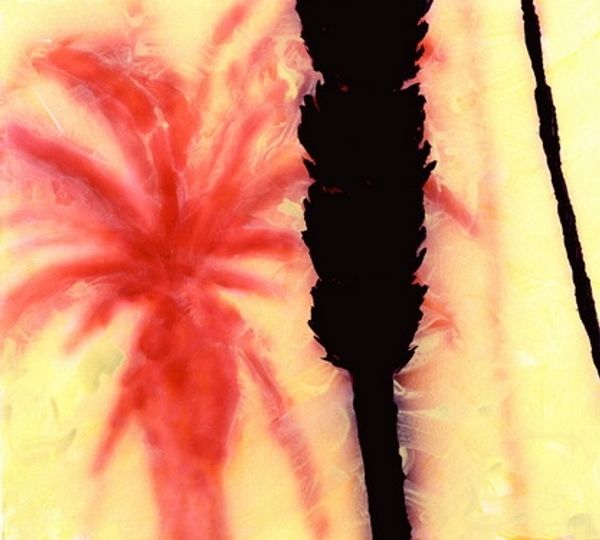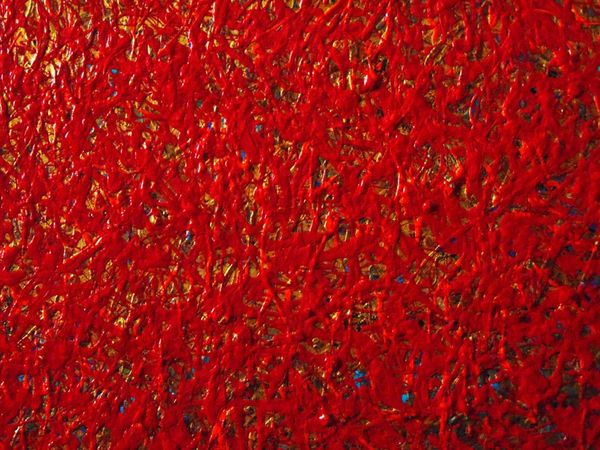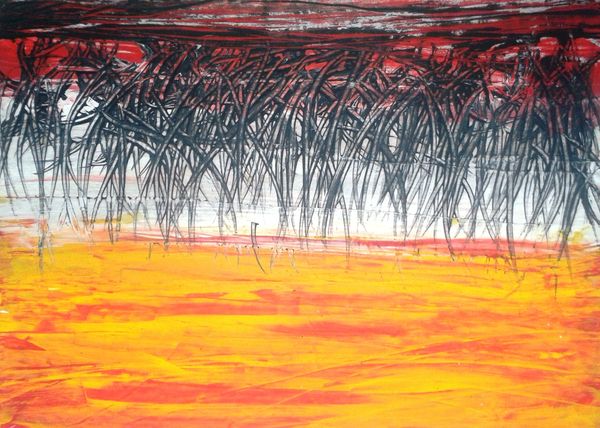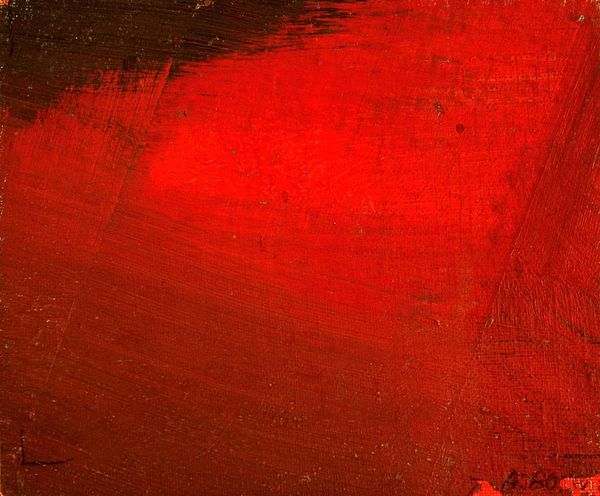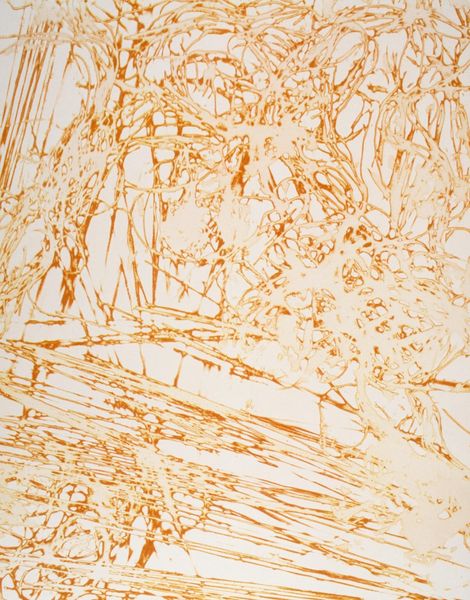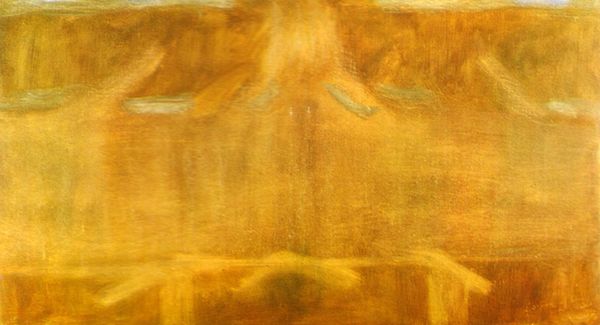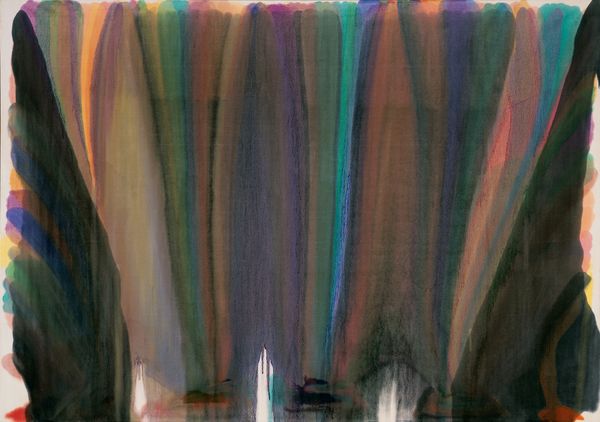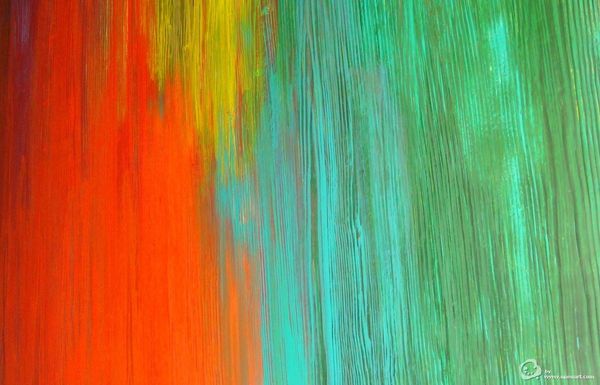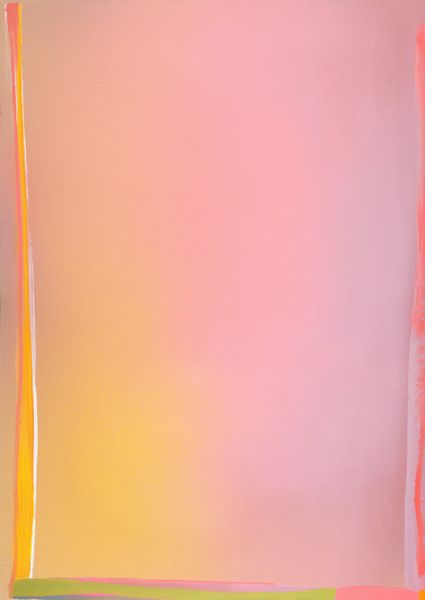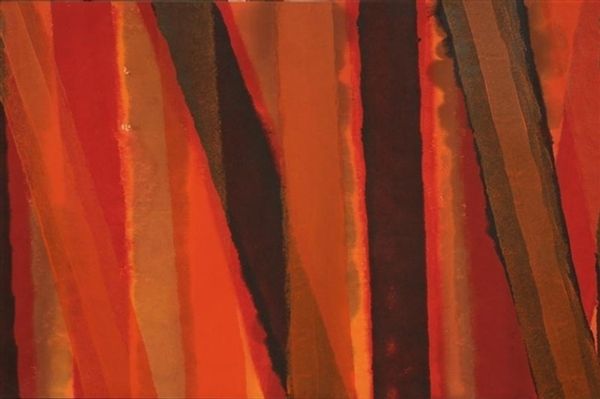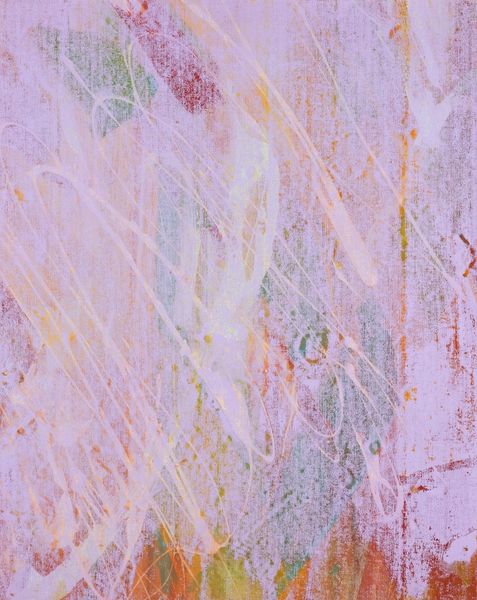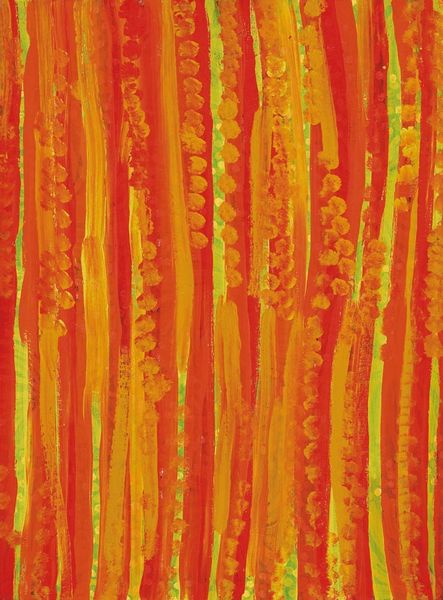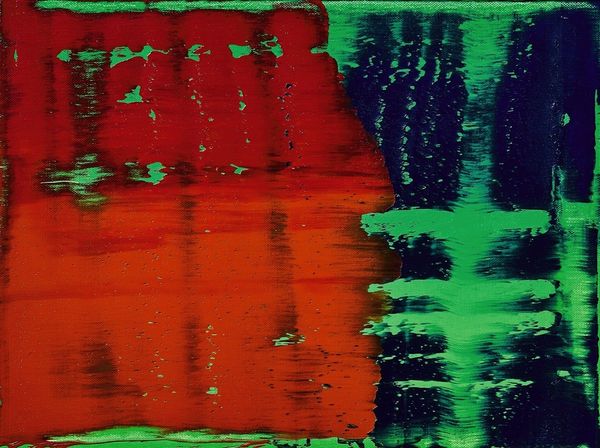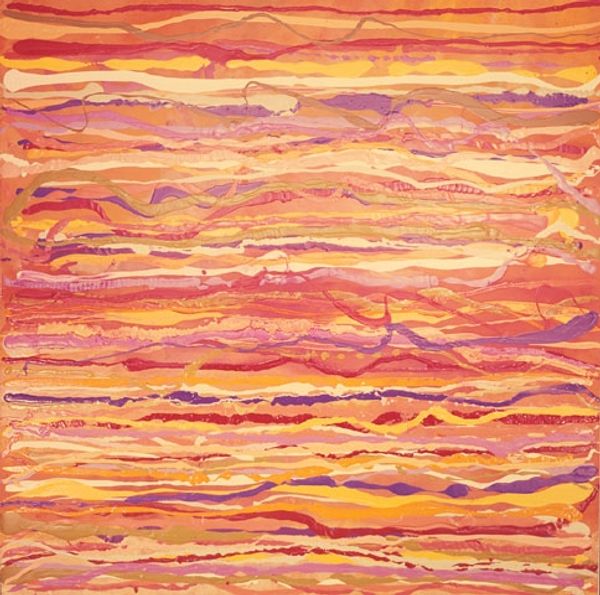
watercolor
#
abstract-expressionism
#
washington-colour-school
#
abstract expressionism
#
water colours
#
colour-field-painting
#
watercolor
#
abstraction
#
line
#
watercolor
Copyright: Sam Gilliam,Fair Use
Editor: Here we have Sam Gilliam's "Pink Flutter," a watercolor piece from 1969. The warm colors immediately strike me. It feels light and airy, almost like sunlight filtering through a curtain. What aspects of this work stand out to you? Curator: For me, it's all about the process. Gilliam, particularly in his earlier works, was intensely interested in the properties of his materials and how they interacted. He manipulated the canvas and the watercolor, allowing gravity and chance to play a role in the final image. How do you think this surrender to process challenged the conventions of artmaking at the time? Editor: Well, I guess it shifts the focus from the artist's intention to the inherent qualities of the materials. It's less about control and more about collaboration. Did this reflect any broader social trends or concerns back then? Curator: Absolutely. Think about the late 60s - there was a questioning of authority, a move toward more democratic or decentralized systems. Gilliam's approach reflects that. He dismantled the traditional hierarchy of artist-as-master and embraced a more egalitarian relationship with his materials. Editor: That's fascinating. So it's not just about the pretty colors; it's a statement about labor and control. Curator: Precisely! And consider the "staining" technique - pouring and soaking paint directly into the canvas. How does that alter the perception of the object itself? Editor: It feels less precious, somehow. Less like a precious commodity and more like a record of an event, of a specific moment of creation. Curator: Exactly! The focus is shifted to the *doing* and *making*, and away from the *finished* product. I think that Gilliam's experimental approach can also challenge our own assumptions about the division between high art and the more physical nature of craft, as he explored both labor and materiality to new means. Editor: This has really opened my eyes. I went in thinking it was just a pretty abstract painting, but now I see the deeper implications of his methods. Curator: Indeed, appreciating the artist's tools, the materials themselves, and how they reflect their surrounding society is an incredibly rewarding part of understanding the artwork.
Comments
No comments
Be the first to comment and join the conversation on the ultimate creative platform.
